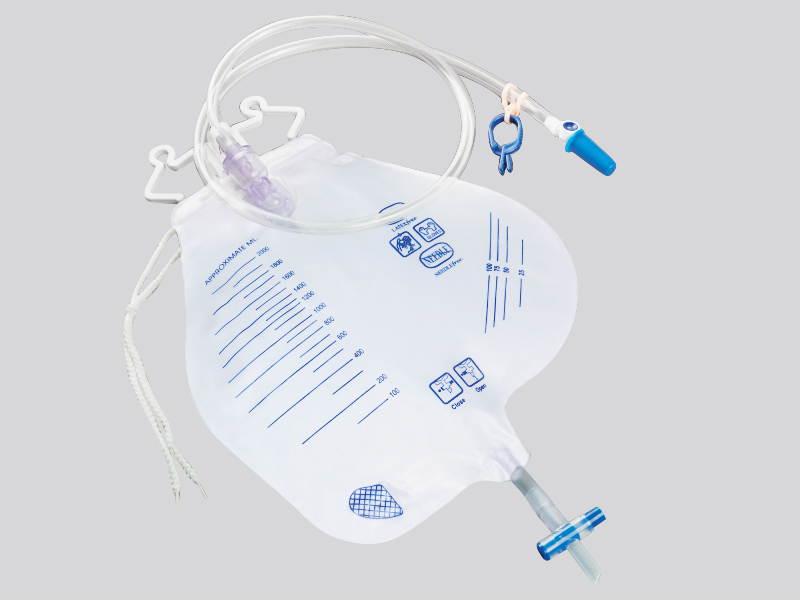
The current position:Home > Information dynamic
> Industry Trends
Which departments in hospitals are disposable feeding bags commonly used
source:m.szkuer.com | Release time:2025年06月23日1、 Gastroenterology Department
1. Applicable scenarios:
To provide nasogastric feeding for patients with swallowing dysfunction, esophageal surgery, or severe gastric ulcers, liquid food is injected into the stomach through a feeding bag connected to a nasogastric tube to avoid choking or infection caused by oral feeding.
For patients with acute pancreatitis, gastrointestinal bleeding, etc. who need to gradually resume their diet after fasting, use feeding bags for enteral nutrition support, and control the amount and speed of food intake (such as 30-50ml per hour).
2、 Neurology/Neurosurgery
1. Applicable scenarios:
Patients with weakened or absent swallowing reflex caused by stroke, traumatic brain injury, late stage Parkinson's disease, etc. require long-term nasal feeding. The feeding bag can be paired with a nutrient pump to control the flow rate correctly and reduce the risk of reflux.
When the patient's consciousness is unclear or swallowing function is not restored in the early stage after craniotomy, nasal feeding should be done through a feeding bag to avoid food being mistakenly inhaled into the trachea and causing aspiration pneumonia.
3、 Intensive Care Unit (ICU)
1. Applicable scenarios:
Critical illness patients (such as those with multiple organ failure or severe trauma) require continuous enteral nutrition support. Feeding bags should be used in conjunction with warmers to prevent low-temperature liquid foods from damaging the intestines. Additionally, sterile packaging can reduce the risk of infection.
For patients using ventilators, feeding bags can correctly control the feeding amount and prevent gastric contents from refluxing into the airway, which complies with the ICU's operating procedures for preventing ventilator-associated pneumonia (VAP).
4、 Recovery Department
1. Applicable scenarios:
For patients in the recovery period of swallowing function, use feeding bags for nasal feeding training and gradually transition to oral feeding; At the same time, some patients with limb dysfunction (such as spinal cord injury) who cannot eat independently can also be assisted by nursing staff through feeding bags.
5、 Geriatric Department/Geriatric Ward
1. Applicable scenarios:
When elderly people experience difficulty eating due to muscle degeneration or cognitive impairment (such as Alzheimer's disease), they can use feeding bags for nasal or oral feeding assistance to reduce the risk of coughing and malnutrition.
For elderly patients with chronic diseases (such as diabetes and hypertension), the feeding bag can correctly control the calorie and nutrition ratio of liquid diet (such as low sugar and high protein formula).
6、 Oncology Department
1. Applicable scenarios:
When advanced cancer patients are unable to eat due to tumor compression of the esophagus and mucosal damage caused by radiotherapy and chemotherapy, enteral nutrition support is provided through feeding bags to maintain the body's immunity.
Patients with gastric and colon cancer after surgery need to fast for a short period of time. After evaluation by a doctor, liquid food should be gradually injected into a feeding bag to promote intestinal function recovery.
7、 Pediatrics/neonatology
1. Applicable scenarios:
When premature infants, low birth weight infants, or infants with congenital digestive tract abnormalities (such as cleft lip and palate) are unable to suckle independently, they can be fed in small amounts through a feeding bag connected to a gastric tube to control milk volume and temperature (38-40 ℃).
When children have difficulty swallowing due to neurological disorders such as cerebral palsy, use a feeding bag for nasal feeding to avoid affecting growth and development due to insufficient food intake.
8、 Operating Room/Anesthesiology Department
1. Applicable scenarios:
When patients have not fully recovered their swallowing function during the postoperative recovery period, short-term use of feeding bags for liquid diet transition can prevent vomiting and aspiration after anesthesia.
Prev:
How to prevent cross contamination of disposable …
Next:
What are the material characteristics of disposab…

 Cn
Cn En
En WeChat ID:
WeChat ID:







 Contact us
Contact us
 Add WeChat
Add WeChat
 Telephone
Telephone